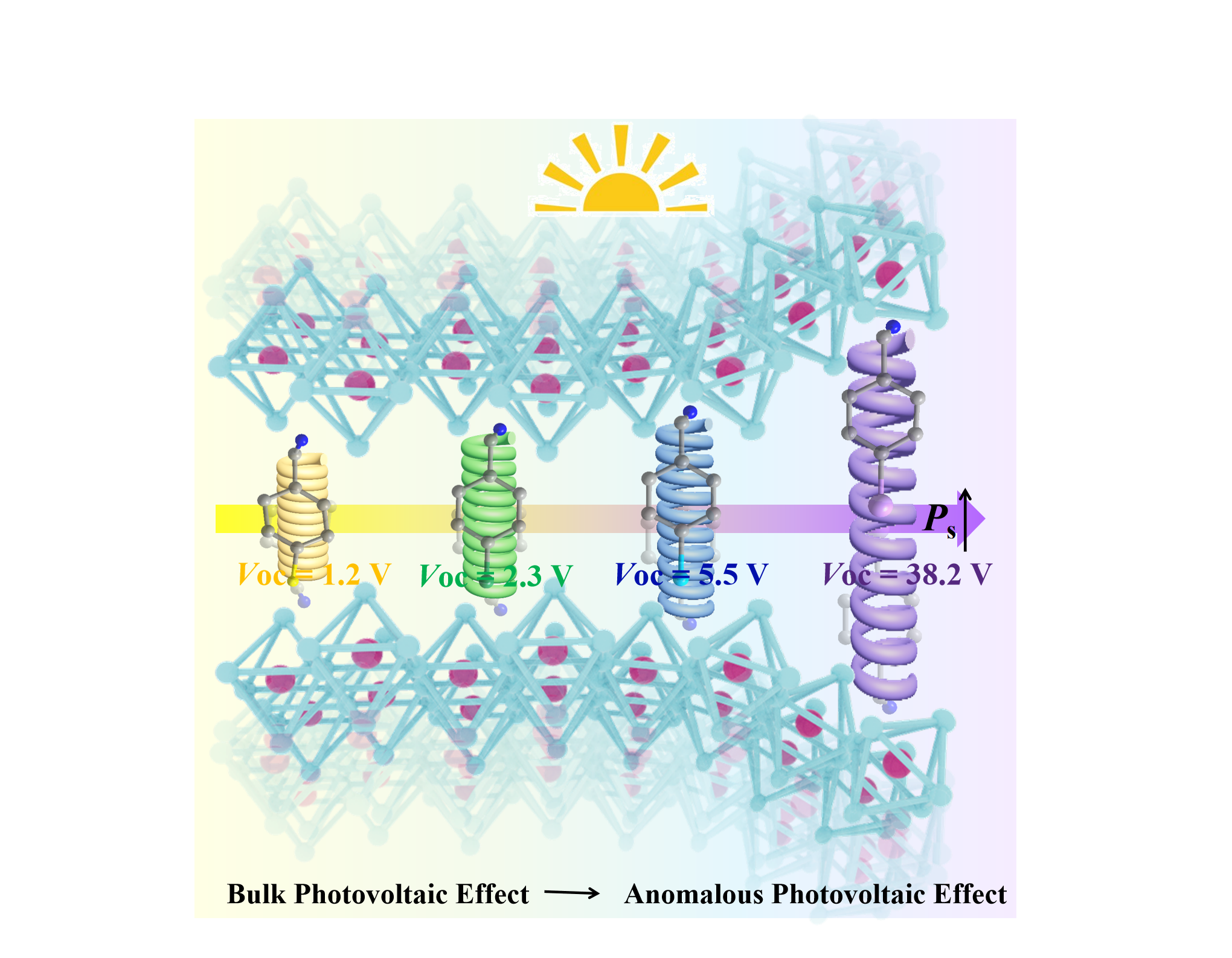Ferroelectric anomalous photovoltaic effect (APVE), which can exceed the bandgap by several orders of magnitude, has emerged as a fascinating candidate for high output voltage and wireless energy transmission.
Currently, the halogen substitution strategy of dynamic moieties stands out as one of the most effective strategies for exploiting new ferroelectric materials and optimizing ferroelectric properties. However, there remains a huge gap in establishing the relationship between halogen substitution of spacer cations and photoferroelectric properties for optoelectronic applications.
In a study published in Nature communications, Prof. SUN Zhihua and Prof. LUO Junhua from Fujian Institute of Research on the Structure of Matter, Chinese Academy of Sciences, have conducted a pioneering study aimed at regulating ferroelectric photovoltaic effects through a halogen substitution strategy.
The researchers optimized the halogen substitution strategy to obtain a series of two-dimensional perovskite ferroelectrics of (4x-benzylammonium)2(ethylammonium)2Pb3Br10 ((4x-BA)2(EA)2Pb3Br10, abbreviated as 4x-BEB, x = F/Cl/Br/I). These isostructural compounds show progressively boosting ferroelectric photovoltaics, which are unprecedented.
The researchers found that the p-site halogen-substituted BA+ cation exhibits adjustability in both molecular size and dipole moment, resembling quasi-molecular spring, which thereby enables precise tuning of structural motifs. This molecular engineering not only enhances spontaneous polarization but also facilitates Br- ion migration, both of which serve as the driving forces for ferroelectric photovoltaics.
As a typical case, the member 4I-BEB shows a giant ferroelectric APVE of 38.2 V, which is ~15 times that of its optical bandgap, exceeding other inorganic oxides and representing the highest value within the family of semiconductors.
This study knocks on the door of halogen substitution strategy in the design of new APV-active ferroelectric materials.

Illustration of the Research (Image by Prof. LUO’s group)
Contact:
Prof. SUN Zhihua
Fujian Institute of Research on the Structure of Matter
Chinese Academy of Sciences
Email: sunzhihua@fjirsm.ac.cn